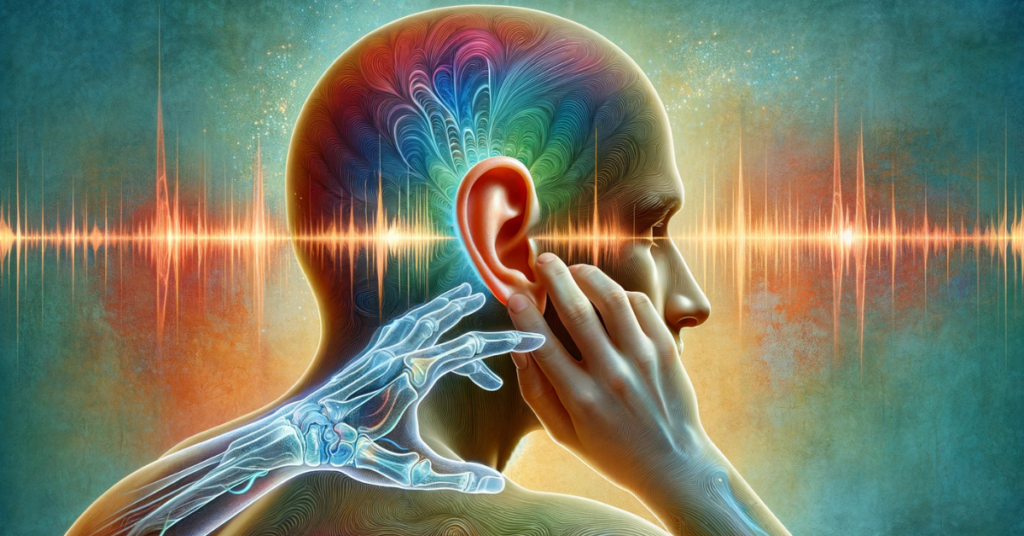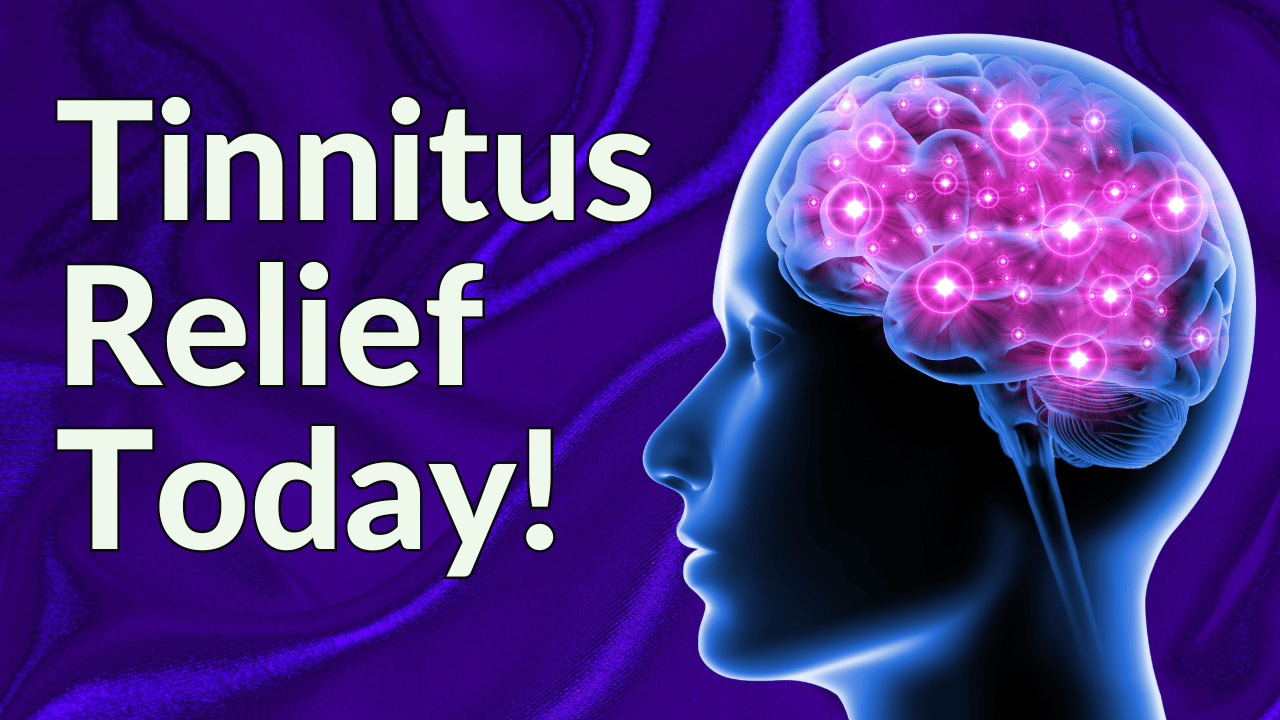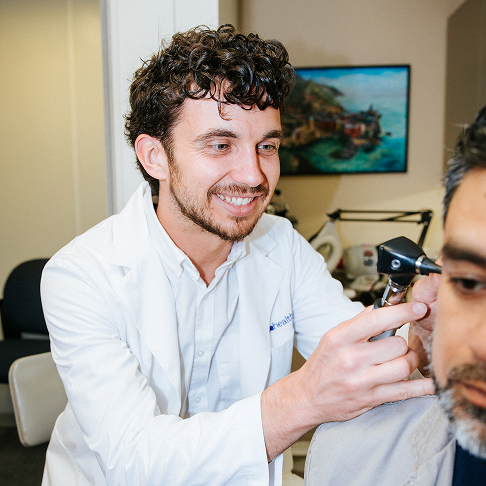Did you know there is a connection between the chronic pain arising from phantom limb pain and the distressing audio from chronic tinnitus? They may seem like two unrelated conditions, but they actually have more in common than you might think.
Phantom limb pain and tinnitus are two conditions that affect many people and can cause a great deal of distress to daily life function. Both conditions create phantom sensations, one which is acute physiological body pain and the other phantom auditory perception, which are linked to many cerebral structures and emotional centers within the brain. While neither of these conditions is fully understood, there are many similarities between them in both how they present and how they are treated.
By understanding the similarities between phantom pain and tinnitus, we can see how distressing tinnitus can be and how life-changing getting treatment for it can be. Let’s explore these conditions below starting with an overview of phantom limb pain.
Phantom Limb Pain: An Overview
What Is Phantom Limb Pain?
Simply put, phantom limb pain is the experience of pain or other sensations in a limb that doesn’t exist. Phantom limb pain is most commonly associated with amputation. Of the 30,000-40,000 amputations that take place each year, almost 80% of amputees report phantom limb sensations.
"As a recent graduate who’s achieved stage four habituation, I cannot thank Treble Health enough for getting me to the finish line."

"As a recent graduate who’s achieved stage four habituation, I cannot thank Treble Health enough for getting me to the finish line."
– Louis
Book a free consultation to learn which Treble Health solution is right for you. Join Louis and thousands more who have found lasting tinnitus relief.
This is not to be confused with residual limb pain that amputees report, which is physical pain in the remaining portion of the amputated limb that usually resolves as it heals. Unlike residual limb pain, phantom limb pain has no physical source and does not usually resolve with the healing of the surgical site. In fact, phantom limb pain can occur years after amputation when the site has been healed for months.
It is also important to note that phantom limb pain can present as all sorts of different sensations and in varying degrees of severity. For instance, one individual might feel a severe sharp, stabbing pain whereas others may feel a mild squeezing pain or aching pain. It can also come and go over time. An individual could feel nothing for months and then down the road report phantom pain that they have previously never had.
As you might imagine, phantom limb pain can be notoriously frustrating and even debilitating to daily life. To experience pain that comes from somewhere you logically know isn’t there anymore is arguably more mentally taxing than chronic pain originating from anywhere else in the body.
What Causes Phantom Limb Pain?
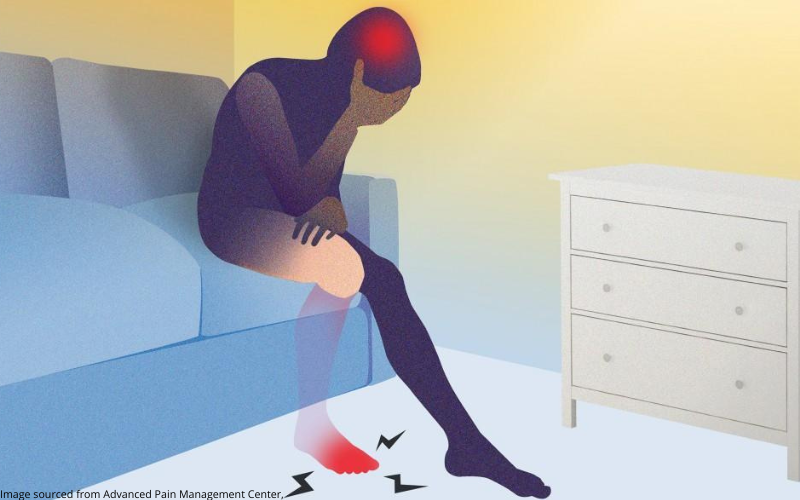
So what causes this abnormal sensory perception in amputated limbs? While research is still ongoing, the exact cause of phantom limb pain is still unknown. There have been multiple theories debated over the years, some with more merit than others.
The agreed-upon theory for years was that the nerve endings at the site of amputation were irritated and that caused the sensation of pain. However, with greater technology like MRIs and PET scans, scientists now know that both psychological and neural mechanisms play a role.
Currently, the predominant theory is that the severed nerve endings at the site of amputation fire signals to the brain that cause phantom pain. It is possible that these severed nerve endings have a lack of stimulation and therefore compensate by overfiring and sending signals of sensations to the brain when they are not actually being activated by true pain.
This current theory has been backed by changes we see in the body after amputation. The first change is in the peripheral nerves. During an amputation, the tissues and nerves in the area all experience a great deal of trauma. This changes the normal signaling pathways and the severed nerves begin to develop neuromas, an excess growth of nerve tissue. The neuromas increase the sodium channels which make the nerves hyperexcitable and result in spontaneous firing.
Changes in the spinal cord compound the problem. After amputation, something called central sensitization occurs which is where the receptive field for neurological activity expands, neural activity increases, and the nerves receiving the peripheral signals are hypersensitive.
In addition to these changes in the peripheral and central nervous system, researchers have begun to see a change in the brain after amputation that seems to be a factor in causing phantom pain. This change is called cortical reorganization. Cortical reorganization is where the area in the brain that represents the amputated area of the body gets taken over by neighboring regions allowing the fired signals to be received by the brain as pain in the amputated limb.
To sum it up in a way that is easier to understand, the nerves at the site of amputation grow excess tissue and begin firing spontaneously which is received by a more sensitive area in the spinal cord. Then with the reorganization that has happened in the brain, it processes those signals coming from the spinal cord as pain in the limb that is no longer there.
There is also a psychological component that may contribute to phantom limb pain. Depression, anxiety, and stress can all be triggers for phantom limb pain.
Tinnitus: An Overview
What Is Tinnitus?
Tinnitus is an auditory phantom perception. Essentially, an individual will hear sounds that are not actually happening in the environment around them. Often described as ringing, buzzing, hissing, or whooshing, these sounds may be perceived in one or both ears, with the affected ear varying from one individual to another and possibly changing from day to day.
Tinnitus is a surprisingly widespread condition, with one in five people affected—this amounts to over 67 million individuals within the United States alone who have experienced its symptoms. While the majority, about 80%, find that tinnitus does not significantly impair their daily lives, there is a substantial 20% for whom the condition is severe, disrupting essential daily activities including work, sleep, and reading.
The experience of tinnitus varies greatly from person to person; some find that it diminishes over time, while for others, the condition may unfortunately worsen.
What Are The Most Common Causes of Tinnitus?

Tinnitus can have a wide variety of causes and oftentimes, individuals can have more than one underlying cause. However, hearing loss of any type is considered the most common cause of tinnitus because 90% of those who have tinnitus also experience hearing loss.
Other causes of tinnitus can include:
- Head Injuries
- Neck Injuries
- Medications
- Ototoxic Exposures
- Hypertension
- Diabetes
- Kidney Disease
- Meniere’s Disease
- Autoimmune Disorders
In addition to this list, tinnitus can have many other causes including a mental health component. Increased anxiety and stress responses are often noted as a trigger by many chronic tinnitus patients.
While the pathway each of these causes likely uses the primary sensory cortex to create the phantom auditory perception, it is still widely unknown. However, the connection between hearing loss and tinnitus is more well-studied.
Why Is Tinnitus So Common Among Those Who Have Hearing Loss?
It is commonly agreed upon that due to the lack of auditory stimulation to the auditory nerve fibers within the inner ear (cochlea), these nerve fibers are left to “fill in the blank” when sound waves enter the ear, vibrating the nearby cochlear hair cells and stimulating the auditory nerve fibers without complete hair cell information to process. This incomplete signal processing leads to hyperactive neuron firing within the brain’s primary auditory cortex, leading to the onset of tinnitus or phantom auditory perception.
Essentially, the nerves in the inner ear fire, but there is nothing to process, so the brain fires to create the sounds it believes the nerves are trying to signal.
According To Current Research:
Possible Parallels Between Phantom Pain And Tinnitus
As you might already be able to see, there are some parallels between phantom limb pain and chronic tinnitus. One of the major parallels is that both conditions cause significant discomfort and anxiety. These feelings of anxiety and stress can lead to sleep disturbances, concentration problems, fatigue, depression, and anxiety disorders.

Research shows that nearly 21% of tinnitus patients develop some type of mood disorder (i.e. major depression disorder, generalized anxiety, etc.) and phantom pain is commonly described as uncomfortable, distressing, and associated with lifestyle interference as well.
Unfortunately, as we have discussed, neither condition has an exact known etiology although both are thought to be triggered or caused by lack of stimulation to nerve fibers that were once used to receive and transmit information to the brain for processing of information.
Phantom Pain–Phantom Sound Analogy
Tinnitus and phantom pain have more in common than we might think and often phantom pain is used to help explain the phenomenon of phantom sounds to tinnitus patients.
In phantom pain, the activation of pain perception pathways can trigger brain responses without actually causing the sensation of pain. The sensation of pain can occur in the absence of the activation of pain perception pathways. For instance, neuropathic pain is pain resulting from a lesion of the peripheral or central nervous system and phantom limb pain belongs to the group of neuropathic pain syndromes. On the other hand, nociceptive pain develops in response to a specific stimulus to the body. However, in the brain, nociceptive pain and neuropathic pain have distinct, yet overlapping brain activation patterns in many areas making distinguishing the type and source of pain difficult.
After limb amputation, almost all people experience a phantom limb phenomenon and about 70% suffer from severe phantom pain.
Similarly, auditory perception is possible in the absence of auditory input. More than 80% of people with normal hearing perceive phantom sounds when placed in a soundproof room. On the other hand, stimulus-evoked auditory cortical activation does not produce conscious auditory perception.
Deprivation of auditory input can result in an auditory phantom phenomenon we know as tinnitus. While tinnitus is experienced by most, it can be quite severe for as many as 25% of people who experience the phenomenon.
As you can see there is a clear clinical similarity that exists between phantom limb pain and tinnitus. Both symptoms are subjective perceptions with varying degrees of severity and quality. Both symptoms affect the quality of life of those who experience them and both symptoms occur in body parts that have been deprived of sensory stimulation or input.
The frequency spectrum or pitch of the tinnitus typically reflects the frequency spectrum of the individual’s hearing loss, while the phantom limb pain is felt as coming from the body part that was initially receiving sensory information from healthy and intact nerve fibers or the missing body part.
Phantom Percepts And Memory
Although almost every amputee reports phantom limb sensations, not all report pain, similarly not every person who experiences tinnitus suffers from a debilitating or bothersome form of tinnitus.
Most amputees who report sensations of phantom limb pain report that their pain sensation began around the time of or was triggered by a stressful life event. Similarly many tinnitus patients who report severe/bothersome tinnitus often suffer from post-traumatic stress disorder or have also experienced a recent stressful life event that seems to have “triggered” the tinnitus to increase in severity.
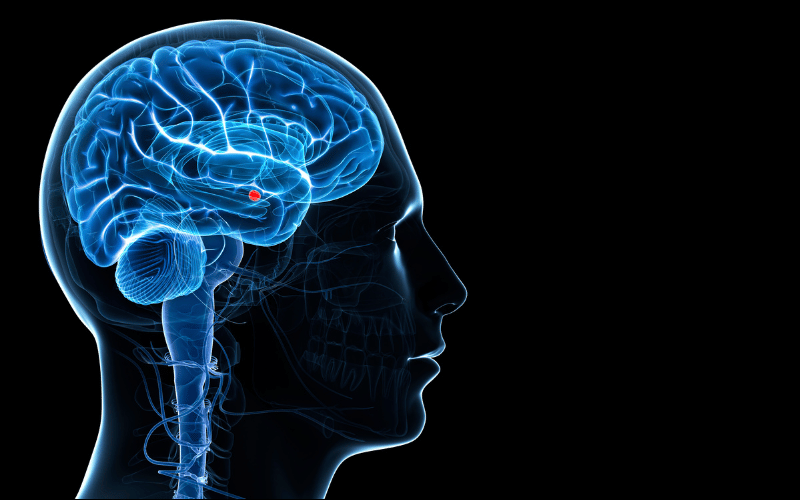
This is believed to be linked to the parts of the brain that control memory and emotion. One part in particular, the amygdala, plays a very active role in how the brain forms a memory of the events surrounding the amputation or beginnings of tinnitus and creates a state of hyper-vigilance surrounding these events when processing memory function. So, as the person experiences their “memory” of phantom limb or tinnitus, this aversive memory is the one recalled over and over again recalling many negative emotions surrounding the current event they are experiencing. This leads to a new long-term “memory” or reaction to their phantom limb or tinnitus and creates a vicious cycle of awareness and reactiveness oftentimes leading to more severe phantom pain perception or tinnitus.
Brain Plasticity—The Cause And The Solution
Neuroplasticity, or the brain’s ability to rearrange its structure, functions, or connections in response to inherited or acquired causes. Essentially our brain can learn. Neuroplasticity plays an essential role in developing our cognitive, sensory, and motor functions, and takes place throughout our entire lives. It allows the brain to continue to learn throughout life, modify our behavior/reactions to new situations and create new neural connections in response to our life experiences whether these are new things we are learning or things like injury or illness.
How Can Brain Plasticity Cause Phantom Limb And/Or Tinnitus?
Because the brain can learn to react and respond to illness and/or injury, when the brain’s response to an amputated limb or hearing loss results in severe phantom pain perception or severe tinnitus the plasticity of the brain is helping to form these memory pathways into something formative. Something that the brain remembers, a learned behavior and without proper coaching and/or treatment this behavior becomes “stuck” as a new response to the absence of a limb or absence of hearing.
How Can Brain Plasticity Be A Solution For Phantom Limb And/Or Tinnitus?
Again, because of the demonstrated neuroplasticity of the brain and its ability to always be learning new tasks and reactions, treatments for phantom limb and tinnitus aim to re-train the brain’s reactions and responses to the absence of the limb or hearing ability.
Specifically, treatments for tinnitus and phantom limb work to help reverse the negative thoughts and emotions surrounding the condition, they help to teach the patient ways to cope with and manage their symptoms and begin to reshape their thoughts surrounding their condition.
In conjunction with other therapies for their condition, many patients who have phantom limb pain or tinnitus can begin to improve their symptoms and begin to improve their quality of life!
How Can Treble Health Help?
At Treble Health, we understand how tinnitus patients experience their symptoms. Our audiologists have a vast understanding of how the brain’s neuroplasticity can be used to reinforce new pathways within the brain to help alleviate tinnitus symptoms, whether mild or severe. We always recommend a multi-modal approach, meaning that we work together to create a comprehensive plan to manage symptoms. This includes applying methods such as Tinnitus Retraining Therapy, Cognitive Behavioral Therapy, Sound Therapy, and hearing aids.
Tinnitus Retraining Therapy
TRT is based on the neurophysiological model that states that the brain is plastic and can be retrained. Through the use of a combination of education, counseling, and sound therapy, TRT helps patients alleviate their tinnitus symptoms through the process of habituation. Habituation is the process of becoming less sensitive to the aversive auditory stimuli persistent in your environment. However, in the case of tinnitus, the focus of habituation is to become less sensitive to the phantom sounds rather than the “real” sounds in your environment.
Cognitive Behavioral Therapy
Cognitive Behavioral Therapy (also called CBT) is a type of psychotherapy that focuses on the relationship between our thoughts, emotions, and behaviors. According to the American Psychological Association, one of the main goals of CBT is to change a person’s thought patterns surrounding a persistent issue affecting their quality of life, in this case, chronic tinnitus.
It promotes the development of coping skills and often results in significant improvements in a person’s quality of life. Cognitive Behavioral Therapy, while immensely helpful, is typically used as a part of a larger tinnitus treatment plan where it is combined with other modalities.
Other Treatments
Other treatments that can be used in tinnitus treatment include sound therapy and hearing aids. Sound therapy is a treatment designed to promote health and healing both physiologically and psychologically using particular sound frequencies created by chanting, chimes, or drumming. Hearing aids are a more well-known part of a tinnitus treatment plan. Hearing aids amplify sound in your surrounding environment which likely reduces the confusion in the signaling pathway of the ear.
Get Tinnitus Treatment Today
Here at Treble Health, we can use all of these treatments in conjunction with one another to help alleviate your tinnitus symptoms. Getting help is as easy as booking a free consultation with one of our expert audiologists.
Next Step: Book Free Consultation
- 75% of patients reduced their tinnitus within three months after following our recommendations.
- "I feel like Treble Health literally gave me my life back." - Randy S. (verified customer)
- Join thousands of people who have reduced their tinnitus after scheduling a free consultation.





